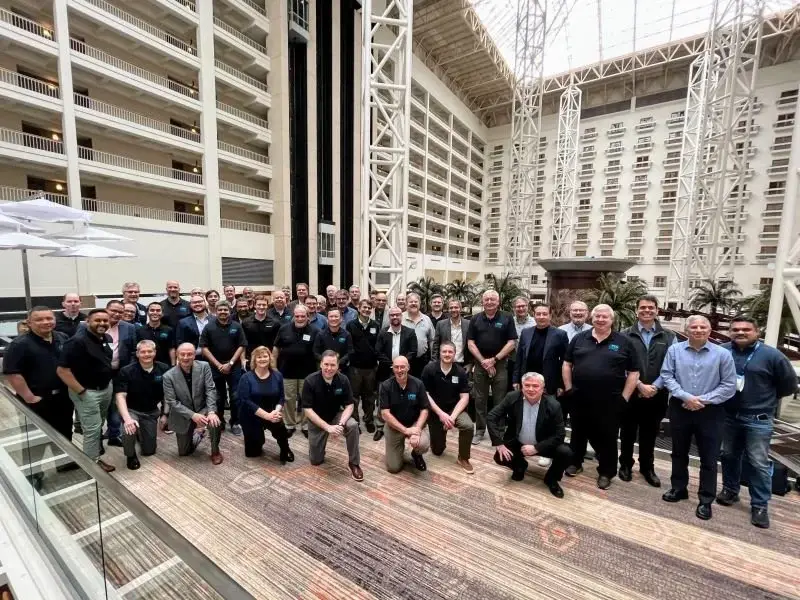Empowering Your Automation Journey
Introducing Open Process Automation
Welcome to the forefront of Open Process Automation. Our expert team specializes in system integration services tailored for manufacturing sectors such as oil & gas, chemicals, food & beverage, consumer packaged goods and more. We blend innovative design with technical expertise to enhance your process control capabilities and drive operational efficiency.
What is Open Process Automation (OPA)?
Open Process Automation (OPA) is an industry initiative to modernize process control systems by moving away from proprietary, vendor-locked solutions toward an open, standards-based, interoperable architecture. Led by the Open Process Automation Forum (OPAF), OPA defines a framework where hardware and software components from multiple suppliers can integrate seamlessly

Benefits of Open Process Automation
No Vendor Lock-In
Interchangeability lets you choose hardware and software from various vendors that work as a unified system, ending obsolescence of systems

Significant Cost Savings
Significantly cheaper Total Cost of Ownership (TCO) - Slash industrial control system costs by 50% and lifetime TCO by up to 70%.

Built-In Cybersecurity
Reduce cyber threats. Built-In from Day One, easily updateable as cyber threats evolve

Enable Innovation
Open Systems allow you to take advantage of the latest trends in IT and OT technology such as fast-cycle-time Model Predictive Control (MPC) and evolving Artificial Intelligence (AI) technology.

Comparison Between Traditional Control Vendors and the CSI Approach
| Key Aspect | Traditional Control Vendors | CSI |
|---|---|---|
| Architecture | Proprietary, vendor-specific hardware and software | Fully software-defined, O-PAS™ standard-based; hardware and software decoupled |
| Vendor Lock-In | High lock-in; swapping components is hard or impossible | No vendor lock-in; interoperable modules from multiple vendors |
| Openness | Closed systems; limited integration flexibility | Open, modular architecture; cross-vendor compatibility |
| OPC-UA Compliance | Many offer OPC-UA, but use proprietary extensions; still control interfaces and support | Full O-PAS™ and native OPC-UA compliance; interoperability without hidden restrictions |
| Does OPC-UA = Open? | No: OPC-UA alone enables data exchange, but doesn’t guarantee full portability, component interchange, or freedom from vendor silos | CSI implements OPC-UA as a layer in truly open systems, ensuring complete portability and modularity, not just data access |
| Cybersecurity | Patchwork, often added post-hoc; may lag behind IT standards | Built-in cybersecurity, updatable as threats evolve, aligned with IT best practices |
| Lifecycle Cost | High initial and lifetime costs; expensive upgrades and long vendor contracts | 50% lower initial cost, up to 70% lower TCO; easy upgrades, avoids forced obsolescence |
| Innovation Pace | Slow, upgrades and new features follow hardware refresh cycles | Enables rapid adoption of IT/OT trends and industrial AI, fast-cycle-time controls |
| Workforce | Requires legacy system expertise and large vendor-dependent teams | Single skillset across platform, attracting next-gen talent, streamlined training |
Important Considerations (or what the Traditional Control Vendors won't tell you)
Why OPC-UA Compliance Does Not Mean “Open”
OPC-UA is a protocol for secure, standardized data exchange. While essential for interoperability, most traditional vendors use it as a gateway, not as a guarantee of true plug-and-play component interchange.
Proprietary implementations and restricted companion specifications mean systems can be technically OPC-UA compliant yet remain functionally closed, thereby preventing genuine openness.
CSI leverages OPC-UA as only one layer within a full O-PAS open, modular architecture—allowing customers to mix and match best-in-class components, rather than simply exchanging data.
Software Defined Architecture Does Not Mean “Open”
CSI’s COPA Control System implements a truly software-defined approach, so control logic and applications run in a virtualized, hardware-agnostic environment for maximum flexibility, portability, and longevity.
Traditional systems are limited by tightly coupled hardware/software and do not support real industrial app-stores or open application portability.
This comparison highlights how CSI’s approach to open process automation goes beyond compliance to deliver true freedom, innovation, and cost savings.
